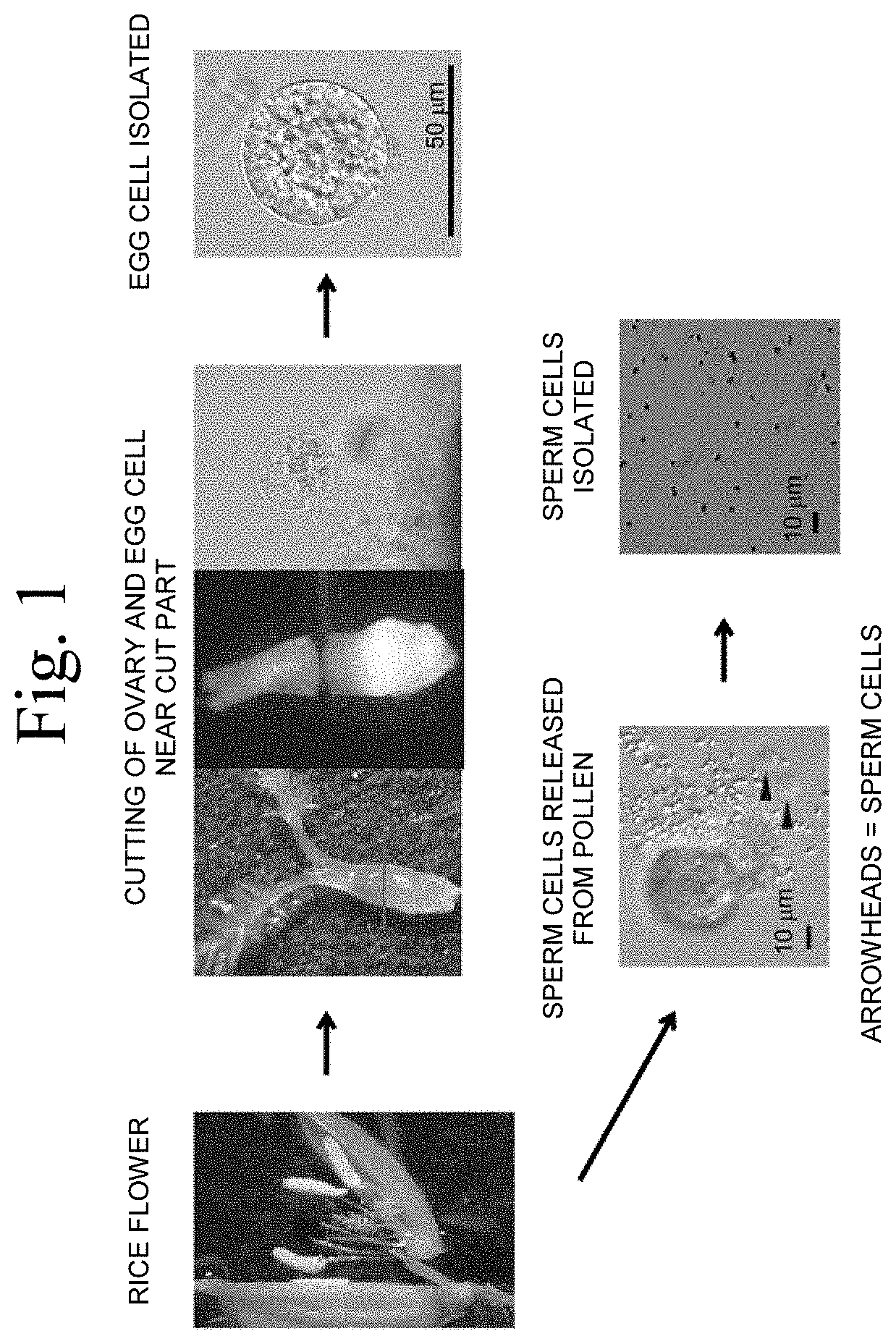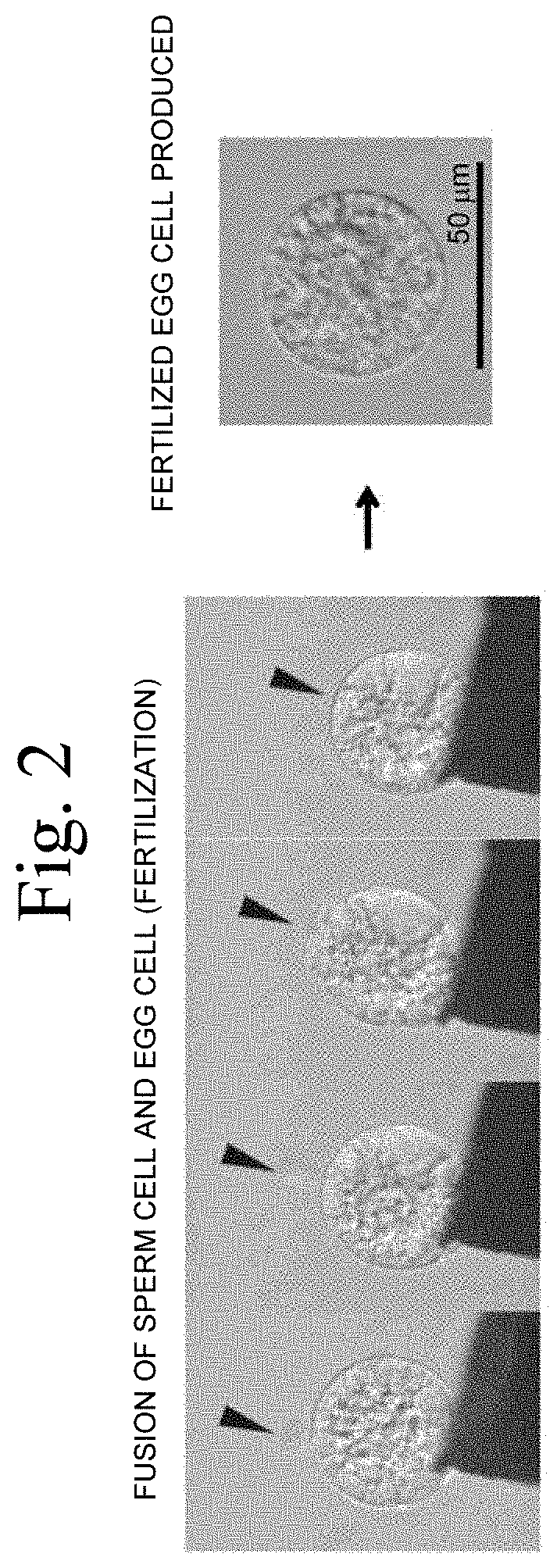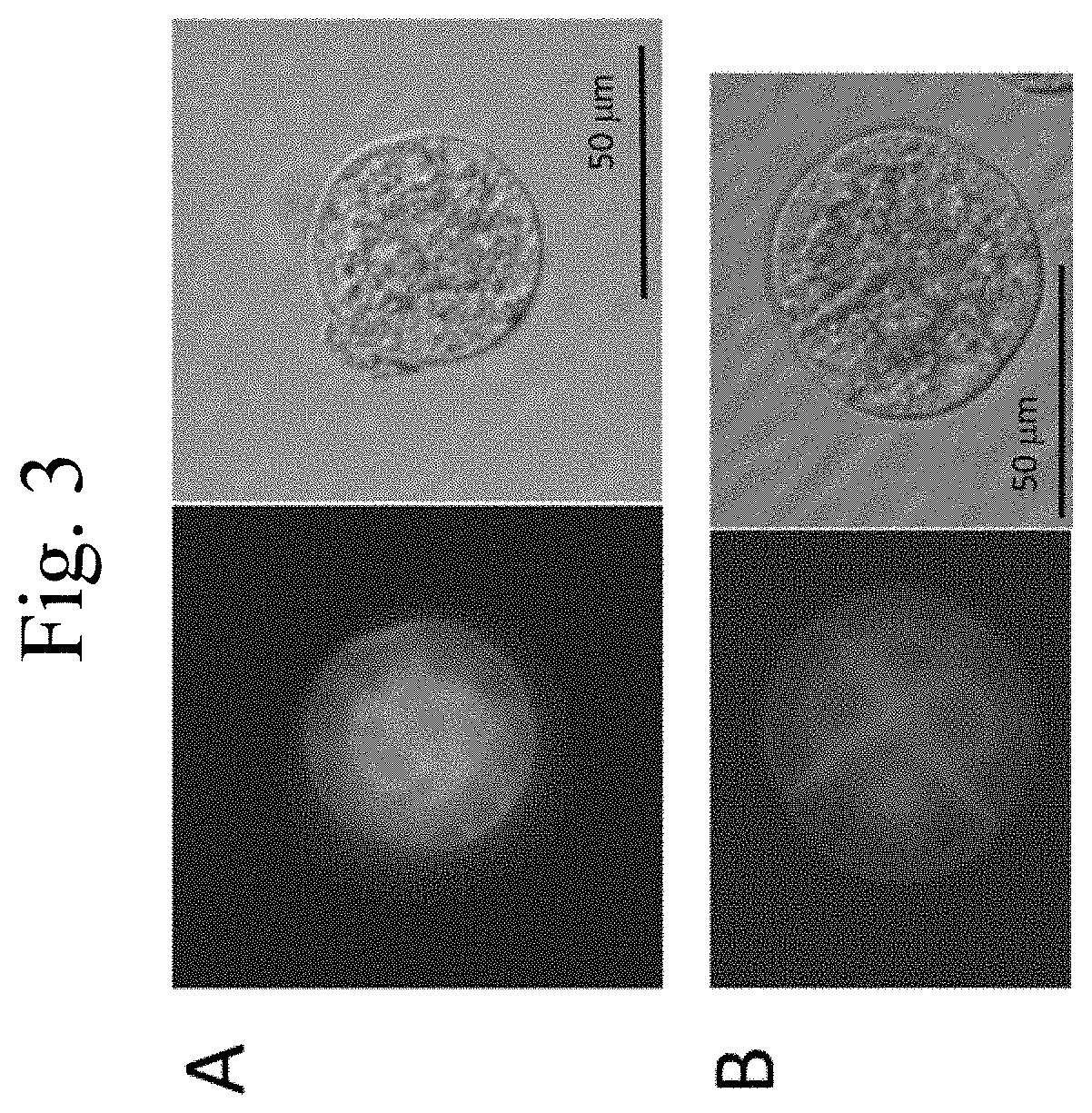Method for introducing substance into plant
a plant and substance technology, applied in the field of plant introduction methods, can solve the problems of low transformation efficiency, inability to obtain plant transformation with reproducibility, and large differences in the efficiency of transformation between species and varieties, and achieve good reproducibility
- Summary
- Abstract
- Description
- Claims
- Application Information
AI Technical Summary
Benefits of technology
Problems solved by technology
Method used
Image
Examples
example 1
of Egg Cell and Sperm Cell of Rice
[0147]In this example, an egg cell and a sperm cell were isolated from a rice flower (FIG. 1).
[0148]The egg cell was isolated as follows. An unbloomed flower obtained from the ear of rice was dissected, to collect the ovary. The ovary was put into a 3.5-cm plastic Petri dish containing 3 mL of a 6% mannitol solution (370 mosmol / kg H2O). The ovary with the stigma removed was submerged into 3 mL of a 6% mannitol solution (370 mosmol / kg H2O) in a new 3.5-cm plastic Petri dish, and the lower part of the ovary was cut at the bottom of the Petri dish using a laser blade (FA-10, manufactured by FEATHER Safety Razor Co., Ltd). The egg cell released from the cut ovary was observed by microscopy, and the egg cell was isolated with a microcapillary. About 10 to 15 egg cells were obtained from 30 to 40 ovaries. Each egg cell had a diameter of 40 to 50 μm. The egg cells isolated were moved into a droplet on a cover glass using a microcapillary.
[0149]The droplet ...
example 2
n of Fertilized Egg Cell of Rice by Fusion of Gametes
[0154]In this example, a fertilized egg cell of rice (in-vitro fertilized egg cell of rice) was produced in vitro by electrofusion of gametes (FIG. 2).
[0155]One sperm cell and one egg cell isolated by the method shown in Example 1 were moved into a droplet on a cover glass. Thereafter, these cells were aligned on electrodes (CUY5100-100Ti, Nepa Gene Co., Ltd.) under alternating current (1 MHz, 0.4 kV / cm, ECFG21, Nepa Gene Co., Ltd). A mannitol solution (520 mosmol / kg H2O) was added into the droplet in an amount equivalent to a half to the same amount of the droplet using a microcapillary. Thereafter, a DC pulse (50 μs, 12 to 15 kV / cm, with a distance between electrodes of 50 to 150 μm) was applied to fuse gametes so as to produce a fertilized egg cell.
example 3
ion of Nucleic Acids into Fertilized Egg Cell of Rice
[0156]In this example, nucleic acids were introduced into the in-vitro fertilized egg cell of rice produced in Example 2.
[0157]The fertilized egg cell produced in Example 2 was treated according to this example, so that substance introduction was completed within 120 minutes after the fusion of gametes. The fertilized egg cell produced was moved into a droplet (about 2 μL) of an MMG solution (15 mM of MgCl2, 4 mM of MES (pH 5.7), 450 mosmol / kg H2O mannitol) and was thereafter moved into a droplet of MMG to which a plasmid (plasmid DNA for GFP expression, about 6,000 bp) with a base sequence to be introduced, 35S promoter::signal sequence::GFP::endoplasmic reticulum retention signal (HDEL)::NOS terminator, has been added. The plasmid was prepared according to the description of NPL 17. Next, the droplet containing the fertilized egg cell was mixed with a droplet (about 2 μL) of a PEG solution (obtained by adding 7.5 g of PEG4000 an...
PUM
| Property | Measurement | Unit |
|---|---|---|
| DC voltage | aaaaa | aaaaa |
| DC voltage | aaaaa | aaaaa |
| DC voltage | aaaaa | aaaaa |
Abstract
Description
Claims
Application Information
 Login to view more
Login to view more - R&D Engineer
- R&D Manager
- IP Professional
- Industry Leading Data Capabilities
- Powerful AI technology
- Patent DNA Extraction
Browse by: Latest US Patents, China's latest patents, Technical Efficacy Thesaurus, Application Domain, Technology Topic.
© 2024 PatSnap. All rights reserved.Legal|Privacy policy|Modern Slavery Act Transparency Statement|Sitemap



